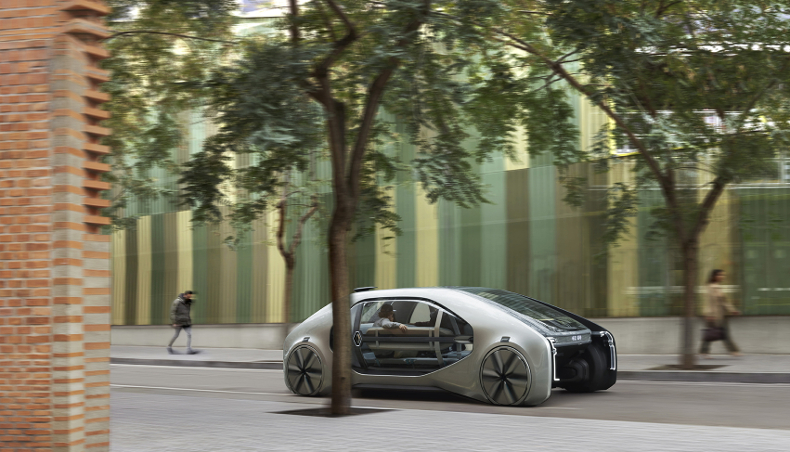
Director of Concept Car Design at Renault since 2014, Stéphane Janin recently took on a new challenge with his teams: developing a “robot-vehicle” expressing Renault’s vision of the future of shared mobility. The result is the Renault EZ-GO concept, unveiled at the 2018 Geneva Motor Show. The task was radically different from the previous concept cars TREZOR and SYMBIOZ since the design team had to “forget” the driver’s station and factor in the particular constraints of the collective use of the robot-vehicle, which presages our urban journeys of the future. Stéphane Janin filled us in on this original approach.

This was the first time you were asked to design a driverless concept-car with no steering wheel, pedals or driver’s station. How did you adapt to the brief?
Obviously the work isn’t the same as with a “regular” concept car such as TREZOR or SYMBIOZ, even though they were equipped with autonomous functions. But no matter what people say, “form follows function” and that rule applies to design. The new functionalities of the car, and the new uses it needs to offer, call for new design solutions.
But we shouldn’t focus on particular features such as the lack of a steering wheel and pedals. The best thing is to take the same approach as usual, addressing all the functions necessary to the vehicle as a whole. First of all, by designing them, and then by making them gel.
In the absence of a driver’s station, we were able to work on the cabin space available to the passengers. But it is a habit at Renault when designing a concept or car to work from the inside out. We put this idea forward strongly with SYMBIOZ but it reaches full throttle with EZ-GO.
What were some of the challenges stemming from the fact that this is a shared robot-vehicle rather than a personal car?
If I had to mention just one, it would be trust. We had to find the right solutions to bring passengers a sense of trust on board EZ-GO. The concept is about shared mobility, and potential passengers will be led to share the traveling experience with “strangers”.
That’s why we made the cabin as transparent as possible, with crystal windows like those on SYMBIOZ concept-car. Our studies show that people prefer traveling in this kind of setting.
We also “stepped up” the idea of conviviality by making sure passengers were not seated one behind the other. We wanted them to be face to face. Hence the broad sofa-style seating in a U shape, enabling them to observe each other before possible starting up a conversation, as they would in a living room, a café or a hotel lobby!
Did you call on any particular technical skills in terms of architecture or urban planning when designing the station?
Regarding urban planning, we were able to draw on our own studies to find out what city dwellers expect from a piece of street furniture such as this station. We also took advantage of information from our Renault Mobility service and feedback from its dialogue with the cities it operates in.
But we also had in-house skills from our Design department. The design of the station was headed by our designer-architect Tina Kentner, who had already worked with the firm tasked with developing the SYMBIOZ house.


